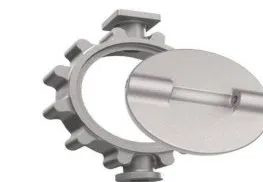Difficulties and Cause Analysis of Processing Titanium Alloy Thin-walled Workpieces
In the machinery manufacturing industry, titanium alloy materials have characteristics that other metal materials cannot possess: high specific strength, high heat strength, and good corrosion resistance; the alloy density is only 58% of steel, so thin Wall and shell structural parts will become common workpieces for defense products. Due to the thin wall of the workpiece, it is easy to deform during processing. The radial clamping force causes elastic deformation of the workpiece, and the tool wears quickly to make the processing size unstable. It is difficult to guarantee the processing quality, which makes the workpiece reject rate and processing cost high. Technicians and processing operators.
The traditional processing of titanium alloy thin-walled workpieces does not pay attention to the selection of tool materials and cutting elements, which makes the processing tools wear faster and the deformation increases; Improper design of the fixture used to eliminate clamping deformation; process measures that do not pay attention to dimensional stability after processing; the biggest bottleneck in the processing of thin-walled titanium alloy workpieces is difficult processing of materials, high requirements for dimensional accuracy and shape and position tolerance, thin wall and easy deformation , There are many factors that affect processing deformation, mainly reflected in the following aspects.
(1) The generation of cutting heat caused by the thin wall of the workpiece causes deformation
The thermal conductivity of titanium alloy materials is smaller than that of stainless steel and high-temperature alloys, and the difference in heat dissipation conditions is 1/4 and 1/16 of that of iron and aluminum, which makes the temperature in the cutting area rise rapidly, and it is difficult to disperse when it accumulates near the cutting edge, resulting in processing defects. Stress concentration near the tool tip causes tool wear and chipping, resulting in deformation of the workpiece.
(2) The rigidity of the workpiece is poor. During the cutting process, the vibration of the machine tool and improper cutting elements will cause deformation. The rigidity of the thin-walled workpiece is poor. When processing thin-walled titanium alloy workpieces due to factors such as machine tool vibration, the inappropriate cutting speed will cause vibration during the cutting process. , causing deformation.
(3) The radial clamping force produces deformation during the cutting process of the workpiece
When processing and clamping titanium alloy thin-walled workpieces, under the action of radial clamping force, it is easy to cause elastic deformation, which affects the dimensional accuracy and shape tolerance requirements of the workpiece.
(4) Deformation due to stress release during workpiece cutting
During the processing of titanium alloy thin-walled workpieces, the stress will be released every time the metal is cut, causing deformation of the workpiece.



